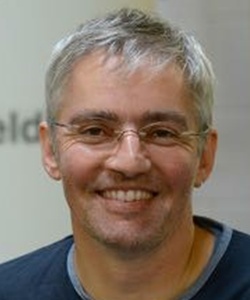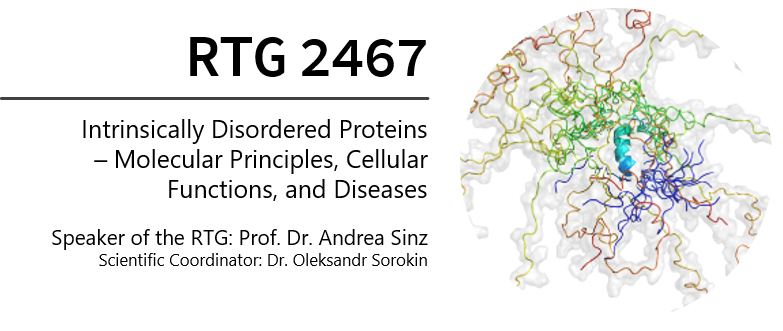
studied Chemistry at the Technical University in Munich, Germany, where he also obtained his PhD in Organic Chemistry. After a postdoc at Oxford University, UK, from 1994 to 1996 with Chris Dobson in the field of protein folding, he moved to the University of Bayreuth, Germany, conducting further research in NMR spectroscopy, first as a scientific assistant, then as a senior lecturer. Since 2004 he is Full Professor of Biophysics and Medical Physics at the Martin Luther University Halle-Wittenberg (MLU). His current interests encompass protein folding and dynamics.
Project within the RTG
Functional amyloid formation of the intrinsically disordered parathyroid hormone during secretion
The human parathyroid hormone (PTH) from parathyroid glands controls blood calcium and phosphate levels by activating its cognate G-protein coupled receptors (GPCRs). PTH is an 84-amino acid peptide, with aa 35-84 being intrinsically disordered. PTH(1-34) is an approved drug for treating osteoporosis as it stimulates the deposition of calcium. In vivo, full-length PTH forms different ordered conformations depending on its local environment or PTMs, including the cognate GPCR or functional peptide amyloid fibrils (Lauth et al., 2022; Gopalswamy et al., 2015). PTMs include the processing of pre-pro-PTH (115 aa) and its phosphorylation. The role of PTH (aa 1-34) for GPCR activation is well understood, however, the functional contributions from the IDR remain largely elusive. As with other peptide hormones (Maji et al., 2009), PTH forms secretory granules after having been processed in the Golgi apparatus and before being released into the bloodstream. PTH fibrils readily release monomers (Lauth et al., 2022; Gopalswamy et al., 2015) and their appearance during cellular segregation classifies them as functional amyloids.
Literature references
Website: https://www.physik.uni-halle.de/fachgruppen/biophysik/
